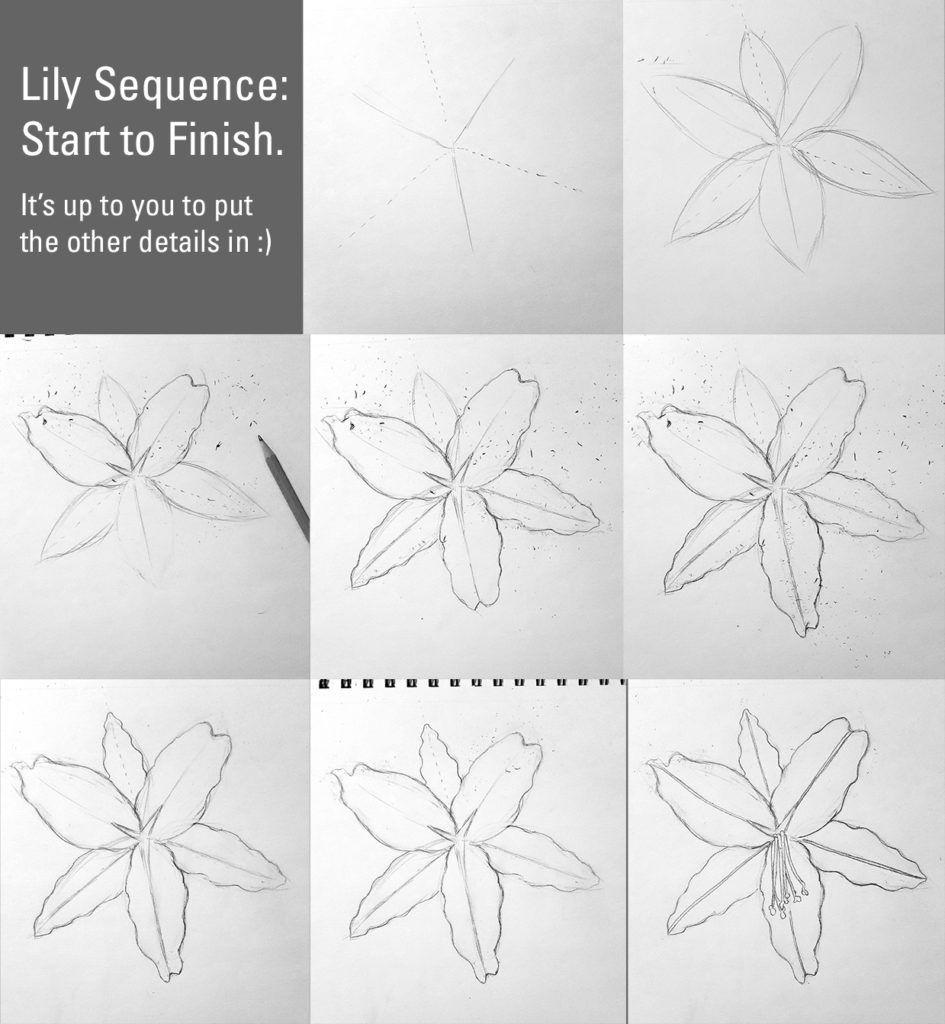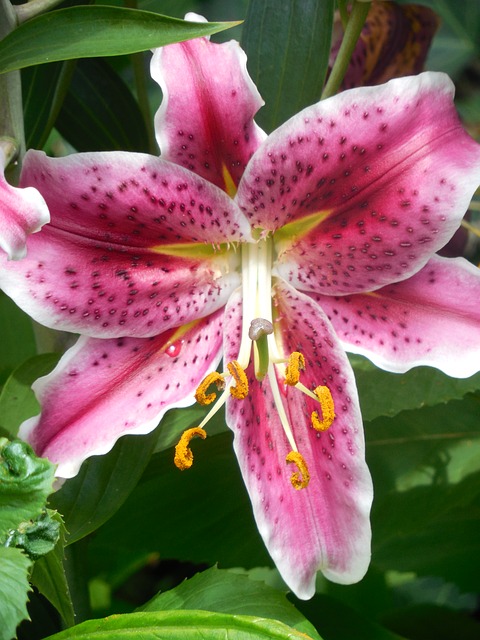Introduction
Lilium sp. (Plantae, Tracheophytes, Angiosperms, Monocots, Liliales, Liliaceae, Lilioideae, Lilieae, Lilium sp.).
Members of the genus Lilium. are considered “true lilies”. Other flowering plants with “lily” in their name but not from the genus Lilium are not true lilies (daylilies, peace lilies, canna lilies, water lilies, toad lilies, and calla lilies). Butterflies are attracted to lilies, but these flowers are toxic for cats and dogs. Natural pests include the lily beetle and deer. Asiatic species have some amazing and very interesting colors plus distinctive markings like spots. The Oriental species are known for their strong fragrance. Longiflorum lilies are popular during Easter.
The Art.
Find reference photos from the internet by searching: “true lily”; “asiatic lilies”; “oriental lilies”; “aurelian lilies”; “orienpet”; “LA hybrid”; “Turk’s cap”; “Canada lilies”; “Longiflorium lilies”; etc.
How to Begin Tip.
I am using the reference photo from Pixabay, https://pixabay.com/photos/asiatic-lily-lily-garden-plant-854963/ Be sure to look at lots of pictures on the internet! It’s really a blessing and such an awesome resource. Notice the patterns. Using your critical eye, notice the details, patterns, and basic geometrical shapes. Can you reduce the example below using geometric shapes? Notice the different shapes in relation to each other. Note the angle and perspective of the photo (e.g. a side view of the flower will look very different from it’s front view). There’s no real “trick” to drawing except to hone your eye–really fine tune your senses.

Download these free PDF templates (free for personal use; please do not resell or repackage for sale).
Have you seen our image transfer video? If not, watch it here. It will help you with transferring the images from the template into a design/arrangement that works for you!
References
